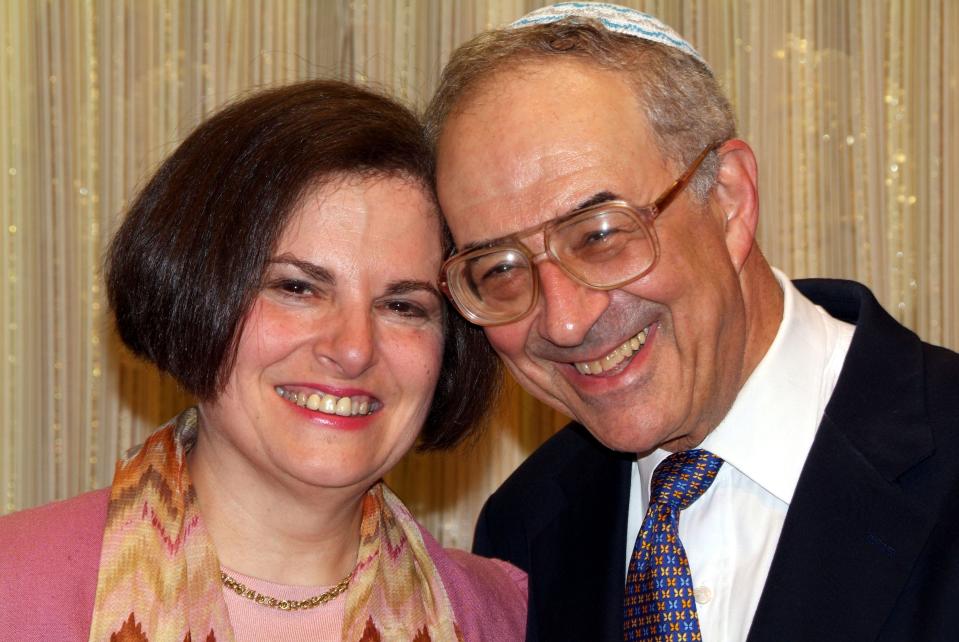Coronavirus: My husband's nursing home did everything it could, but we still lost him
On Monday, April 20, 29,468 new COVID-19 cases were reported in the United States, and an estimated 1,700 people died of the disease. If recent history is any guide, a large share of those deaths were undoubtedly among nursing home residents. My husband, Stan Cohen, was one of them.
For more than a year, Stan lived in a Maryland skilled nursing facility after suffering a spinal compression fracture. He made only a partial recovery. His immobility brought about other complications, so it was no longer safe for him for him to live at home, or return to his cherished job at the Department of Education, a position he had held for more than 40 years. Our family responded to his new status by helping him live as full a life as possible away from home.
We spent time with Stan at the nursing home every day. He eventually improved enough to occasionally visit friends and family in their homes, see a performance at The Kennedy Center in Washington, D.C., attend the year-end holiday office party and celebrate his 86th birthday at a restaurant.
Nursing facility goes on lockdown
His outside forays, and our daily visits, came to a crashing end in March as the realities of COVID-19 pandemic hit home. Following state guidance, his facility began restricting visitors; March 11 was the last day I was able to see Stan in person. I feared that the lack of company would cause him to lose the zest for life he managed to maintain during the past difficult year. Yet, Stan somehow soldiered on. On Wednesday, April 8, the first night of Passover, I organized a Zoom Seder. Stan joined our usual group of family and friends for a while, happily singing favorite songs.
What if I catch the disease? I'm a psychiatrist, not an emergency room doctor. But I was sent to COVID-19's front lines.
The next day I received a call from the nursing director of Stan’s unit, informing me that that he was running a fever. His doctor suspected a urinary tract infection. He also had a cough, but that didn’t alarm me: Stan suffered from seasonal allergies, and a springtime cough for him was routine.

On April 7, Maryland Gov. Larry Hogan announced first-in-the-nation statewide “strike teams” to support long-term care facilities with testing, infection control protocols and on-site medical triage. These were appropriate measures, but in Stan’s case, they arrived too late.
On Monday, April 13, the nursing director let me know that a patient in Stan's unit had tested positive for COVID-19. Early the next morning, I was informed that Stan's fever was 102 and he was having trouble breathing. He was taken to the hospital, and tested positive for COVID-19. He was admitted to the intensive care unit, with a primary diagnosis of UTI/sepsis and a secondary diagnosis of COVID-19.
For several days, Stan responded to high-pressure oxygen therapy administered through a mask. On Saturday April 18, further tests showed that he never had a UTI after all — it was all COVID. As the day wore on, Stan’s ability to absorb the high-pressure oxygen declined and his condition worsened. On Monday, April 20, he died.
Facilities need more tests
I’m convinced that my husband’s nursing center did all they could to minimize community spread: barring outside visitors; isolating patients in their rooms, even for meals; and countless other efforts. But as with thousands of other long-term-care facilities, they were fighting with more than one hand tied beyond their backs.

With the ongoing shortage of COVID-19 testing kits, they simply lacked the ability to test residents and staff. As a result, asymptomatic staff were presumably able to infect patients like my husband.
Emotional pain: Restricting nursing homes kept important family ties from elderly, not COVID-19
As of this writing, Stan’s center reports 57 cases of COVID-19 among patients, 50 among workers and 10 patient deaths.
In Montgomery County, where his center is located, two-thirds of COVID-19 deaths have been linked to nursing facilities. And despite Hogan’s order that all residents and staffers be tested for the virus, many nursing facilities in the state still lack adequate access to testing.
Stan’s death on April 20 coincided with this year’s commemoration of Yom Hashoah — the day Jews around the world remember victims of the Holocaust. In other years, Stan and I attended communitywide memorial services. This Yom Hashoah, Stan lay dying in a hospital bed, the victim of a disease that, like Nazi storm troopers, can attack with a cruel and unsparing intensity.
Until there is true access to universal testing nationwide, and far more attention is given to the vulnerabilities of even the nation’s best nursing homes, stories like mine will remain the rule, not the sad exception.
Sue Ducat is the senior communications director at Health Affairs. She and Stan were married since 1988.
You can read diverse opinions from our Board of Contributors and other writers on the Opinion front page, on Twitter @usatodayopinion and in our daily Opinion newsletter. To respond to a column, submit a comment to letters@usatoday.com.
This article originally appeared on USA TODAY: COVID-19 deaths: My husband's nursing home needed more virus tests

 money
money 